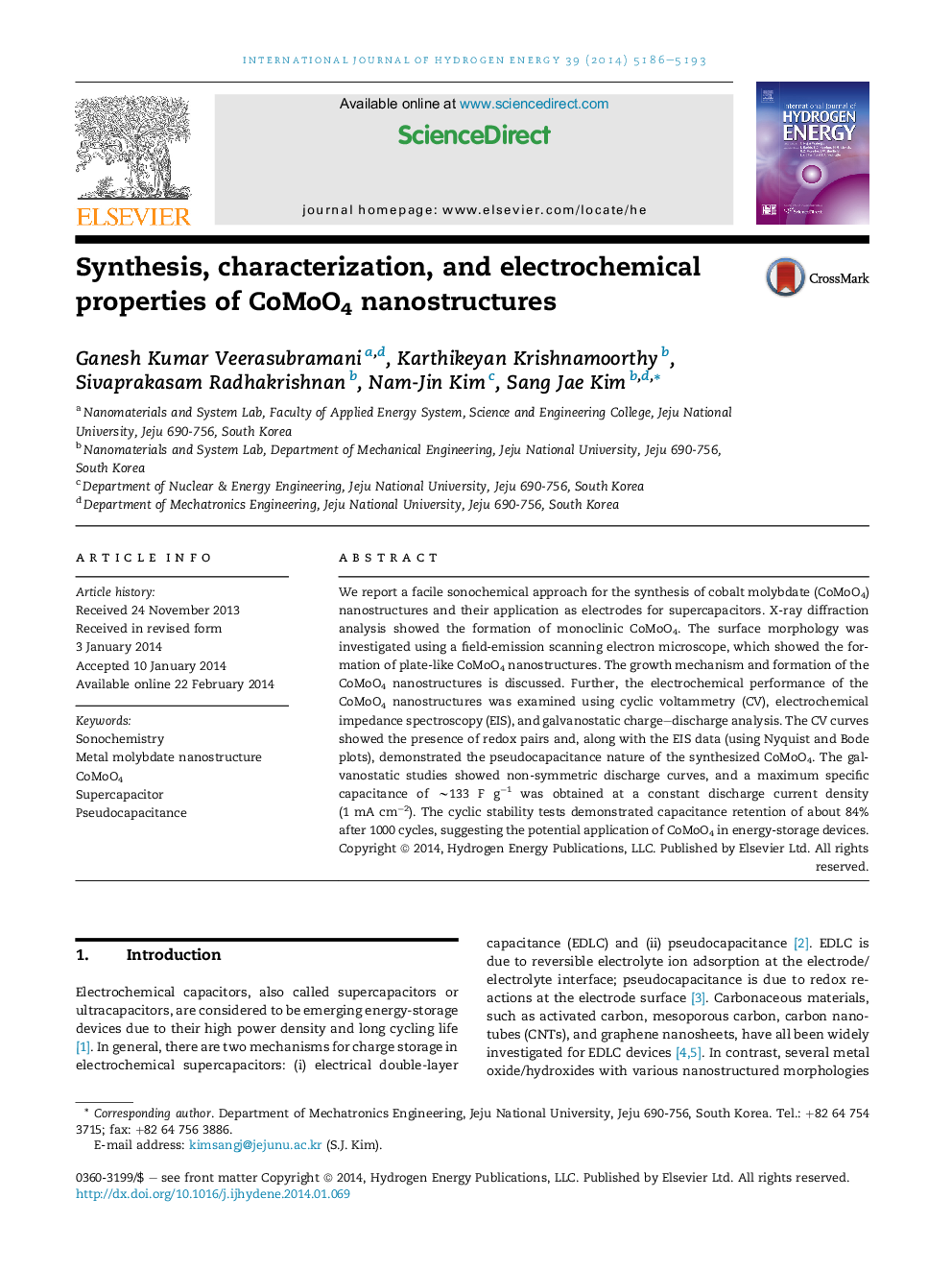| Article ID | Journal | Published Year | Pages | File Type |
|---|---|---|---|---|
| 1281287 | International Journal of Hydrogen Energy | 2014 | 8 Pages |
•Nano CoMoO4 was synthesized by sonochemical method.•FE-SEM studies show the plate like morphology of CoMoO4.•XRD studies show the presence of monoclinic phase of CoMoO4.•Specific capacitance of 133 F g−1 was achieved using charge–discharge analysis.•CoMoO4 electrode shows capacitance retention of about 84% after 1000 cycles.
We report a facile sonochemical approach for the synthesis of cobalt molybdate (CoMoO4) nanostructures and their application as electrodes for supercapacitors. X-ray diffraction analysis showed the formation of monoclinic CoMoO4. The surface morphology was investigated using a field-emission scanning electron microscope, which showed the formation of plate-like CoMoO4 nanostructures. The growth mechanism and formation of the CoMoO4 nanostructures is discussed. Further, the electrochemical performance of the CoMoO4 nanostructures was examined using cyclic voltammetry (CV), electrochemical impedance spectroscopy (EIS), and galvanostatic charge–discharge analysis. The CV curves showed the presence of redox pairs and, along with the EIS data (using Nyquist and Bode plots), demonstrated the pseudocapacitance nature of the synthesized CoMoO4. The galvanostatic studies showed non-symmetric discharge curves, and a maximum specific capacitance of ∼133 F g−1 was obtained at a constant discharge current density (1 mA cm−2). The cyclic stability tests demonstrated capacitance retention of about 84% after 1000 cycles, suggesting the potential application of CoMoO4 in energy-storage devices.
Graphical abstractFigure optionsDownload full-size imageDownload as PowerPoint slide
